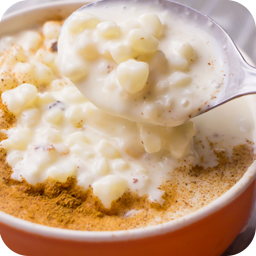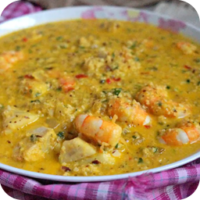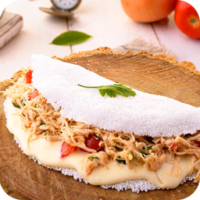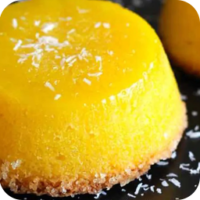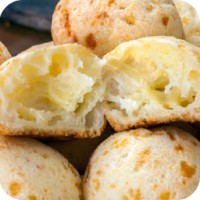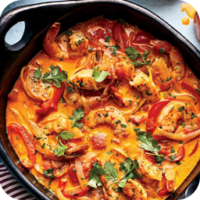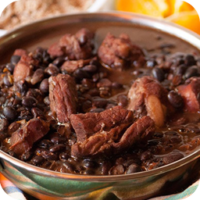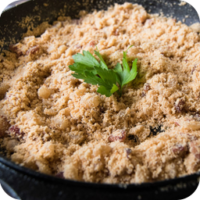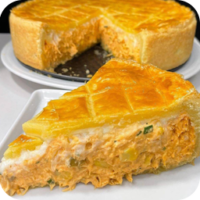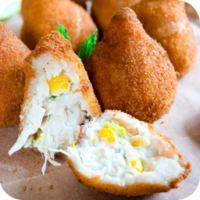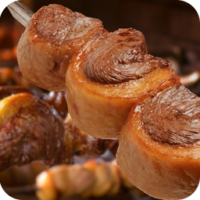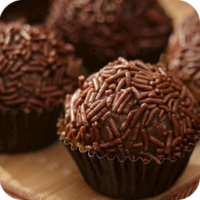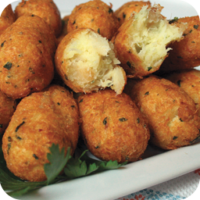Canjica is a traditional Brazilian dish made from hominy corn, which is corn that has been treated with an alkali solution to remove the hulls. The dish is especially popular in the northeastern and southeastern regions of Brazil, often served during festive seasons like June Festivals (Festas Juninas), Christmas, and New Year’s.
It is a sweet dish typically cooked with milk, sugar, coconut, and spices, giving it a creamy, comforting texture. It is often served as a dessert or a hearty snack and is beloved for its warm, rich flavor.
Key Features of Canjica:
- Main Ingredients:
- Hominy Corn: The star ingredient of the dish, the corn kernels are soaked and then cooked until they become soft and tender.
- Milk: Full-fat milk or sometimes coconut milk is used to create the creamy base of the dish.
- Sugar: Adds sweetness to balance the richness of the milk and coconut.
- Coconut: Either shredded coconut or coconut milk is used to enhance the texture and flavor of the dish.
- Spices: Cinnamon, cloves, and sometimes vanilla are added for aromatic flavor.
- Preparation:
- The hominy corn is soaked overnight in water to soften it before cooking.
- The corn is then boiled with milk and sugar until the kernels are tender and the mixture becomes thick and creamy.
- Shredded coconut, cinnamon, and sometimes a few whole cloves are added to the dish, giving it a rich and spiced flavor.
- The dish is typically served warm and can be topped with more coconut, cinnamon, or even sweetened condensed milk for extra richness.
- Serving:
- Canjica is often served as a dessert, but it can also be enjoyed as a snack or breakfast dish, especially in the colder months.
- It’s commonly seen at festivals and family gatherings, and it’s especially popular during Brazil’s Festa Junina celebrations.
Cultural Significance:
- June Festivals (Festa Junina): Canjica is a typical dish during Festa Junina, a popular celebration in Brazil held in June, honoring saints like Saint John. The festival features traditional foods like canjica, pamonha (corn paste), and quentão (a hot alcoholic drink made with spices), creating a festive atmosphere with music, dancing, and delicious food.
- Regional Specialty: Canjica is particularly common in the Northeast of Brazil, where the corn harvest is abundant, but it is enjoyed throughout the country.
- Comfort Food: Canjica is considered a comforting, warm dish, making it ideal for colder months or as a dessert to end a meal.
Variations:
- Canjica de Coco: A variation that adds a generous amount of coconut, either in the form of shredded coconut or coconut milk.
- Canjica with Condensed Milk: Some versions incorporate sweetened condensed milk for a richer and sweeter flavor.
- Canjica Salgada: A savory version, less common than the sweet one, made with corn, salt, and sometimes cheese or bacon.
Nutritional Value:
Canjica is a rich and indulgent dish, providing a good amount of carbohydrates from the corn, along with fat and protein from the milk and coconut. It’s typically high in calories, especially when made with condensed milk and coconut. While it’s delicious and satisfying, it’s best enjoyed as an occasional treat rather than a regular part of the diet.
Fun Fact:
- Corn in Brazilian Cuisine: Corn is a staple ingredient in Brazilian cuisine, and dishes like canjica, pamonha, and curau (a corn pudding) are traditional ways to celebrate the harvest and the versatility of corn.
- Festa Junina: During Festa Junina, it’s common to find canjica being prepared and shared in large quantities at street stalls, fairs, and parties, creating a fun, community-oriented atmosphere.
Summary:
Canjica is a traditional Brazilian dish made with hominy corn, milk, sugar, and coconut, creating a creamy, sweet treat often enjoyed during festivals like Festa Junina. Its comforting, rich flavor makes it a beloved dish during colder months or festive occasions. While typically served as a dessert, canjica can also be adapted into savory versions, but the sweet variant remains the most popular.

